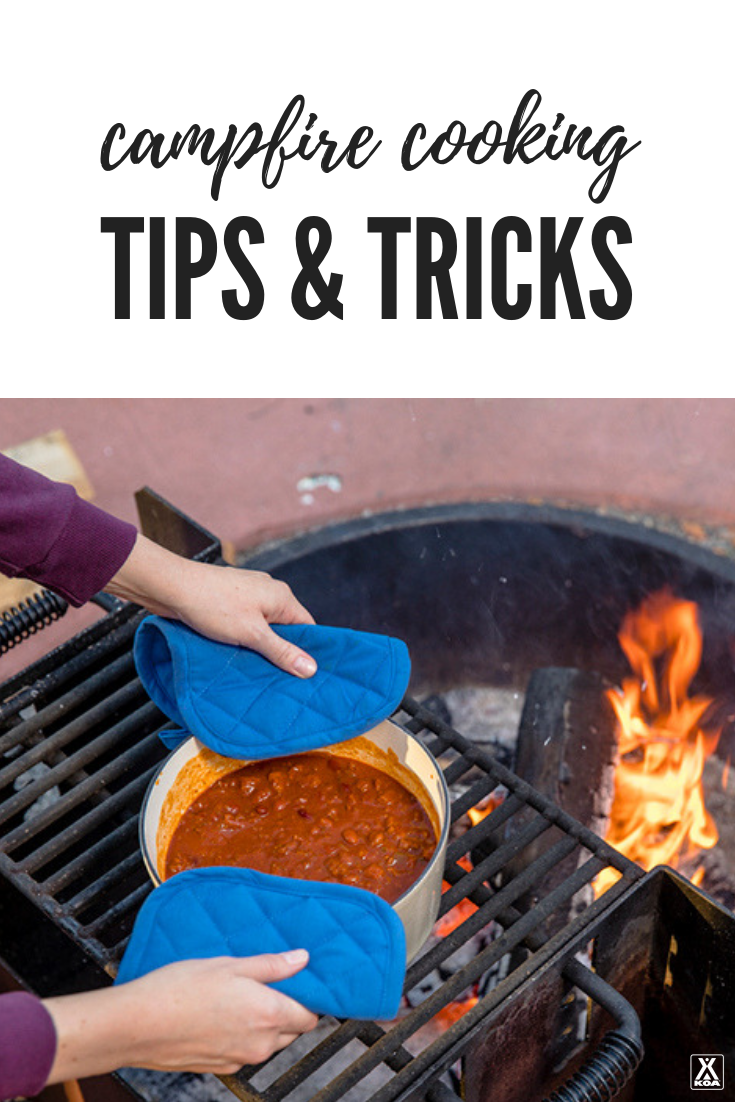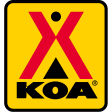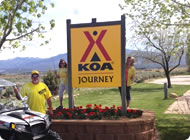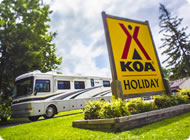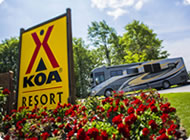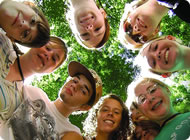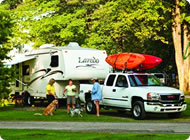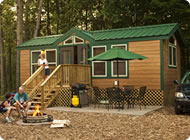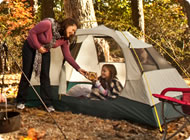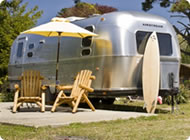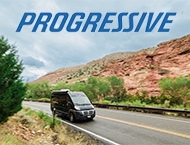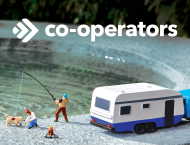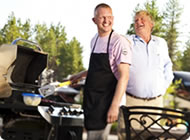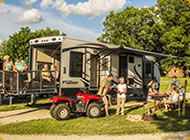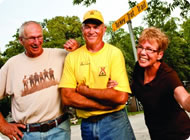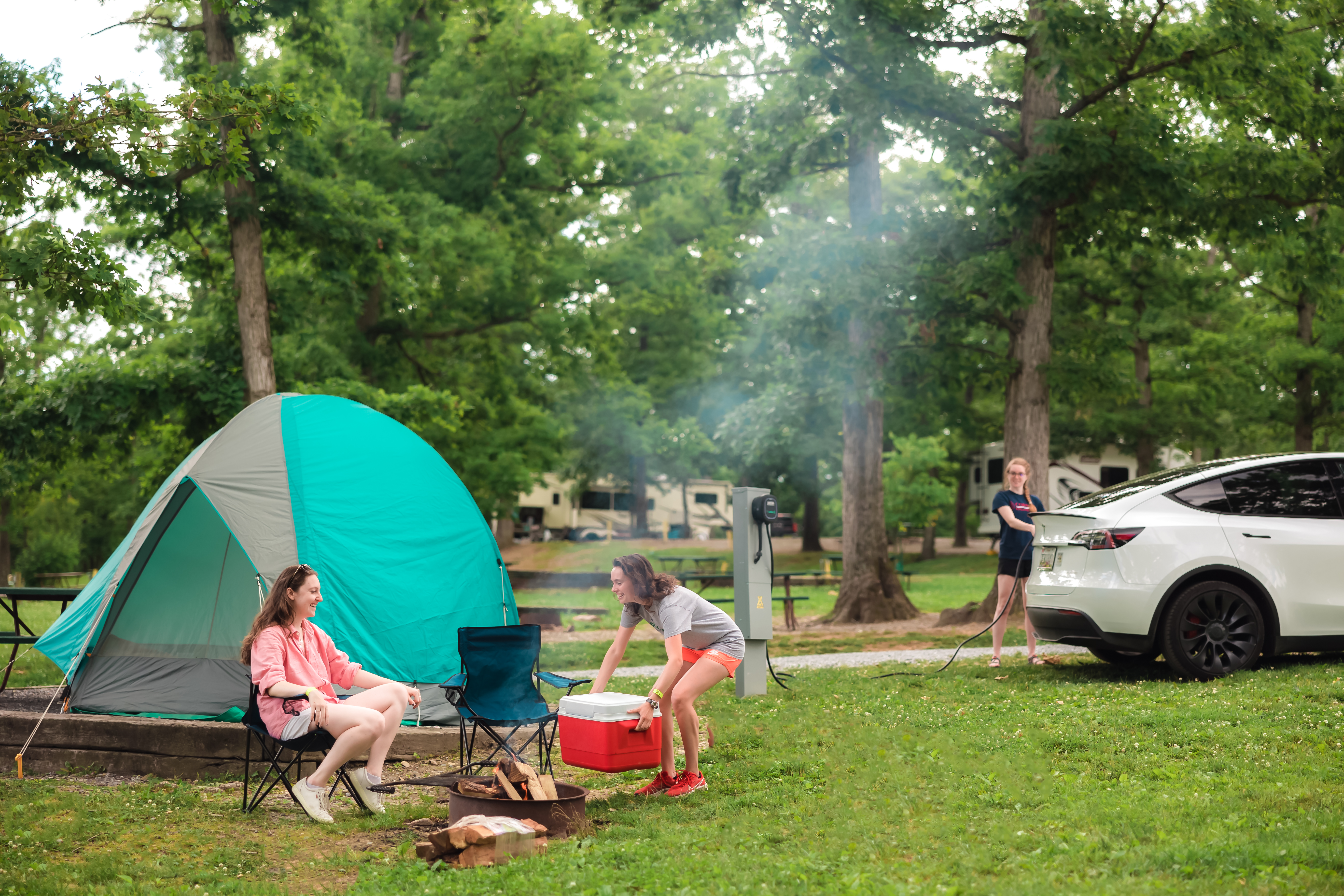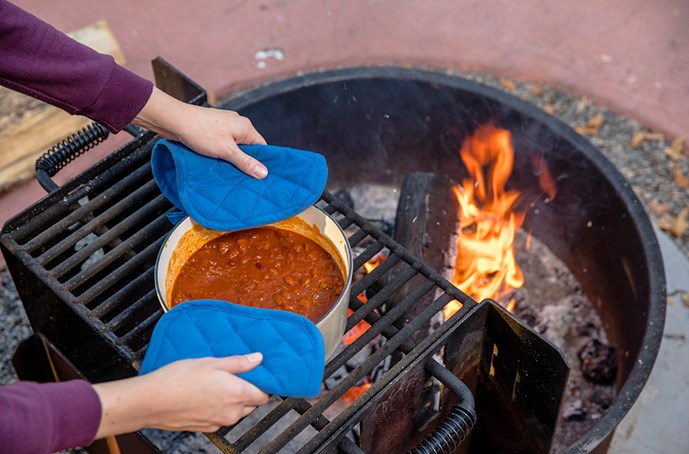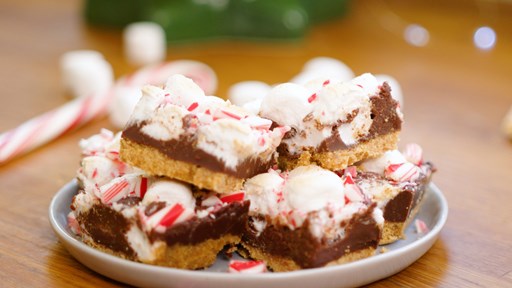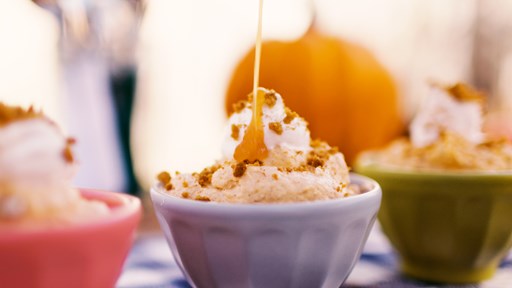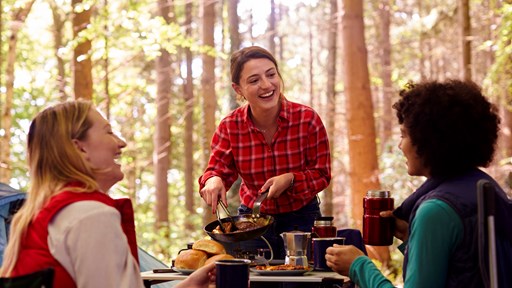Campfire Cooking Tips and Tricks
How to cook over a campfire
Open-fire cookware for campfire cooking
How to build the perfect campfire
Campfire cooking tips
Alternative options for cooking while camping
One of the best parts of a camping trip is gathering around a fire with family and friends to enjoy a campfire-cooked meal. What could be better than the sound of crackling wood and the aroma of dinner in the works?
Many people have fond memories of gooey toasted marshmallows melting in their mouth after a day of hiking, or their mom and dad serving up steaming fresh fish they caught earlier that day. Outdoor campfire cooking makes every camping trip special. Best of all, it is as easy as hobo pie.
Can You Cook on a Fire Pit?
The simple answer is, yes! Humans have been cooking in fire pits for more than a million years. It feels natural to cook and eat around the fire, and anyone can do it. If you’ve never cooked over a fire before or are looking for some hints, keep reading. Here is everything you need to know to get cooking over a campfire the right way. From campfire cookware to cooking with a fire pit tips, you will be ready to put on your apron or cowboy hat and whip up a tasty meal on your next camping trip.
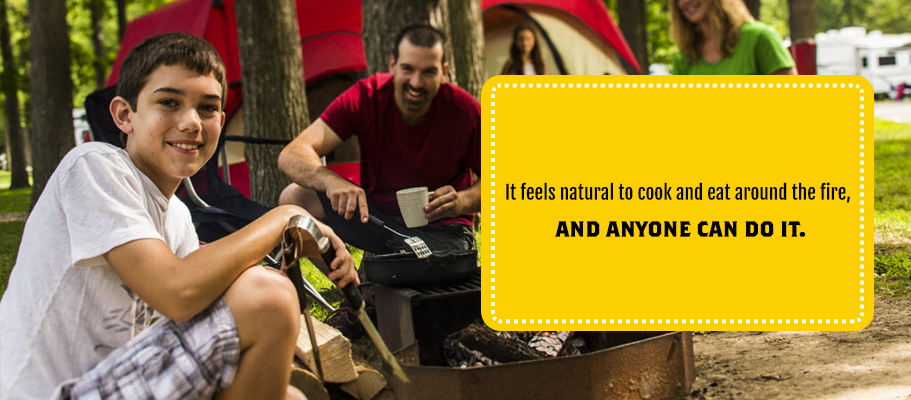
How to Cook Over a Campfire
Although s’mores and hot dogs probably come to mind when you think of campfire food, you can cook just about anything over a campfire with the right tools. Keep the following points in mind:
- Make sure you are building a fire in a safe place.
- Use the right equipment and method for the food you wish to cook.
- Never use plastic in campfire cooking, as plastic melts.
As you will soon see, some cooking tools make campfire cooking a cinch, while others are a little more involved. It all comes down to the time and effort you want to put into meal creation, and how long you plan to camp. Preparation is key.
Open-Fire Cookware
When you picture cowboy campfire cooking equipment, you probably do not envision a cowboy stirring stew in a plastic bucket.
Cast-iron cooking equipment is a must-have for a camping trip. Wrought iron uses a different manufacturing method than cast iron, and it is unlikely you will see wrought-iron campfire cooking equipment at the campground. Titanium, steel and aluminum are also common materials in camping cookware.
The first piece of open-fire cookware you will need is the right cooking surface.
1. Cooking Surfaces
Here are a few potential cooking surfaces to get you started:
- Grill grate: A grill grate is a simple and useful tool for cooking over an open fire. When grilling over a firepit, grill grate creates a safe, stable surface for cooking food directly or placing a pan or Dutch oven on top of it. An over-the-fire camping grill looks like a small metal table with a design that sits over a fire. Just make sure not to cook bacon or anything that produces a lot of fat drippings directly on the grill, as that could spark too many flames. A lot of fun, scrumptious recipes like Campfire Banana Boats are easy to throw together and toss on a grill.
- Rotisserie grill and spit: Does the thought of a campfire-roasted chicken get your mouth watering? If so, you might want to look into purchasing a rotisserie grill and spit. A rotisserie grill-and-spit combo sits over the fire like a grill grate so you can cook items like corn on the cob or potatoes on the grill. The spit is above the grill, so you can cook a rotisserie chicken at the same time.
- Dutch oven stand: A Dutch oven stand gets your cookware off the ground, but keeps it close enough to the heat source for cooking.
- Cast-iron cooking tripod: Want to feel like you are in the Old West? You might bring a Dutch oven tripod on your next camping trip. Instead of placing your Dutch oven on a stand or grill, a tripod allows you to hang the oven over the fire, keeping it off the ground and making you feel like a true member of the Wild West.
2. Pots and Pans
Next, you will need your pots and pans. Plan your meals ahead of time, so you do not pack too much or too little and can figure out exactly what you need.
Here are a few options:
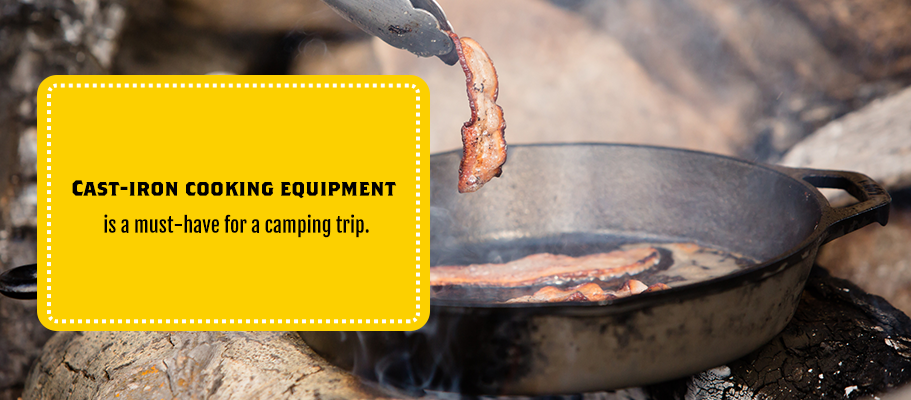
- Cast iron grill and griddle: A cast iron grill and griddle is perfect for whipping up pancakes and eggs in the morning, or grilling up some steaks for a hearty meal later on. Want something sweet? Grill pineapple slices until they caramelize.
- Cast-iron Dutch oven: A Dutch oven comes in handy for all kinds of recipes. You can cook satisfying stews, belly-warming soups, classic baked beans, boil water for pasta and even bake bread over your campfire with a Dutch oven. Serve your Dutch oven masterpiece with cornbread and everyone will be happy.
- Skillet: Choose a cast-iron or aluminum skillet to cook up a variety of scrumptious meals. Fry up the catch of the day or make a skillet dessert like blueberry cobbler. Just consider the depth and size of skillet you will need to match your recipe and feed your group.
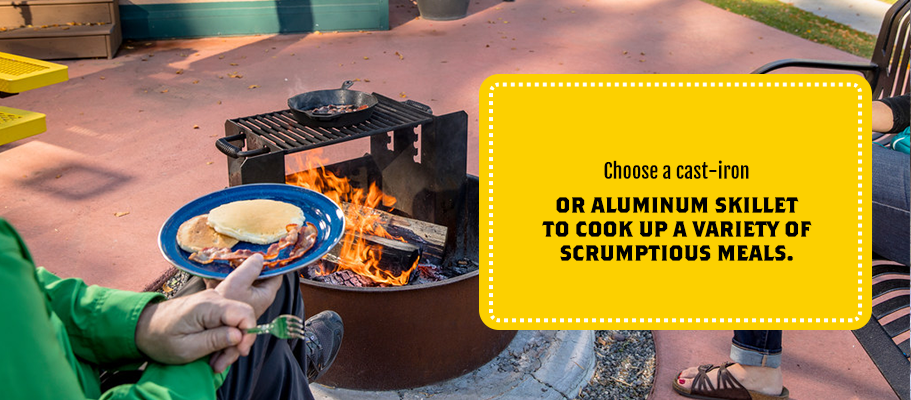
3. Utensils
Once you have your basic cookware, you will need campfire utensils to keep your food on the path to success and your hands safe. Here are recommended utensils for flipping, turning, stirring and serving your campfire delicacies:
- Three-in-one folding grill tool: The last thing campers want is to haul more gear than they need. A three-in-one folding grill tool takes up little space, but provides the utensils you need — such as a grilling spatula, grilling fork and knife — all in one simple folding piece.
- Steel tongs: Every campground chef needs a sturdy pair of stainless steel tongs to get a good grip when it is time to turn or remove grill items and to protect their hands from getting burned. Tongs come in different lengths, so whether you choose nine-inch or 16-inch tongs depends on your setup and what feels comfortable for you.
- Grill utensil set: You may want to invest in a compact, easy-to-transport grill set so you can have all the tools you need in one neat case, and be ready to grill up whatever you want whenever you want. Choose a grill set that comes with the essentials, such as a spatula, tongs, basting brush and skewers. You could buy each utensil separately, but why go through the trouble when you can have it all in one tidy package?
- Long-handled spoon: You will need a long spoon to stir your soups, stews or oatmeal, and there are plenty of safe options to use. You can use a wooden, stainless steel or aluminum spoon to stir your meals.
4. Accessories
Lastly, you will want to bring a few campfire cooking accessories.
- Steel log grabber: You do not want to turn logs or adjust coals with your hands or feet. Instead, make sure to bring a heavy-duty steel log grabber or fireplace poker to keep you safe from the heat.
- Grill gloves: Cooking over an open fire can be tough on the hands, no matter what equipment you have. That is why you want to use a pair of heat-resistant grill gloves so you can happily cook away while protecting your skin from the flames. Wear gloves that are flexible and allow you to get a good grip on utensils and cookware.
- Stainless steel wire grill brush: Keep your grill clean and ready to go with a wire grill brush. Use the brush to remove food and grease.
- Digital meat thermometer: Take guessing out of the process and use a digital thermometer to determine if you have properly cooked your meat. A safe cooking temperature for poultry is 165 degrees, while it is 145 degrees for other whole cuts of meat and 160 degrees for ground meat.
Dutch oven lid lifter: A cast-iron Dutch oven lid lifter lets you easily remove the lid and the Dutch oven. - Lid stand: You will need a place to put the lid to your Dutch oven other than the ground while you stir food. A Dutch oven lid stand is an easy solution.
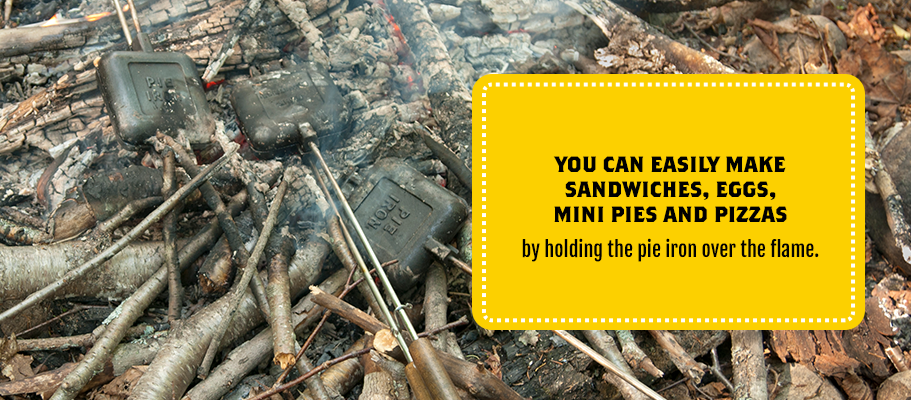
- Pie iron: A pie iron is a cast-iron pan with a long handle. You can easily make sandwiches, eggs, mini pies and pizzas by holding the pie iron over the flame. These pies are also sometimes referred to as pudgie pies, mountain pies or hobo pies.
- Grill basket: What could be more fun and simple than tossing food inside of a metal basket and cooking it over a fire until it is tender and tasty? Fill a grill basket with fresh fish brushed with olive oil and dusted with chili powder, cumin, salt and fresh lime juice, and get ready to make unforgettable campfire grilled fish tacos!
- Steel skewers: A quality set of steel skewers is a must-have for campfire snacks on a whim. Want a twist on the classic s’more? Instead of using the traditional chocolate bar, enjoy a peanut butter cup or peppermint patty s’more instead.
As you can see, campfire food is not just about roasting hot dogs on a stick, although that is undoubtedly part of the fun. Do not be afraid to get creative, try new ideas and enjoy delicious flame-cooked meals you and your camping companions will love.
How to Build the Perfect Cooking Camping Fire
Ready to get cooking? Once you have your culinary tools, it is time to build the perfect fire, which involves burning wood until it turns into coals for even cooking. Here are factors to consider before you get started.
- Wood: First, you will need dry, seasoned wood. Seasoned wood means all moisture has been removed from the wood, making it perfect for clean-burning firewood. You can also choose oak or mesquite wood for flavor.
- Location: Next, you will need to pick a safe place to build your fire. Try to use pre-built fire pits if you can. If none are available, choose a spot that is free of grass, tree roots, loose dirt and any other debris. Make sure there is nothing overhead, like tree branches flames could reach. A general rule is to have three times the height of the fire in clear overhead space and you should always be at least 10 feet away from any tents or other structures.
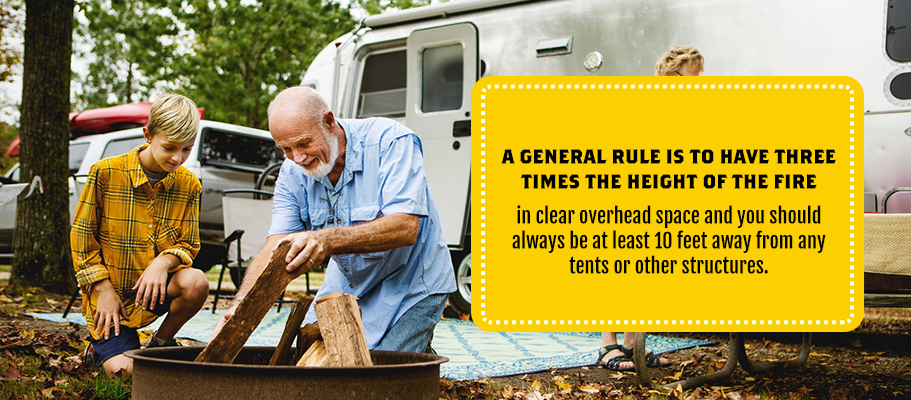
- Wind: If the wind is moderate or strong, you might have to save campfire cooking for another day, because wind could cause runaway sparks or keep you from lighting your fire altogether.
Once you have gathered your wood and found a location, here is what you need to do to build the fire.
- Clear a space: Choose a site at least eight feet away from bushes or anything flammable. Next, form a perimeter using rocks or green logs. Green refers to wood that is fresh and still contains moisture, as opposed to dry, dead logs. Lastly, place a large rock at the rear of the firepit to act as a “chimney” and direct smoke away.
- Place the kindling: Fill the area with tinder, such as crumpled newspaper. Next, place a layer of thin pieces of wood or small dead branches in a vertical layer on top of the tinder. Place another layer of branches on top of the first layer horizontally to create a checkerboard pattern. Start the fire by lighting the paper.
- Add firewood: Once the kindling is aflame, place your firewood evenly over the kindling. When the flames die down, you should have white coals left. Be patient, as this could take up to 45 minutes, and you want the coals to be glowing.
- Add your grill: Place your grill on the rocks or logs above the coals, and you are ready to cook either directly on the grill or in cookware on top of the grill.
Always keep a bucket of water or sand nearby to extinguish the fire. Once the flames die down, stir the ashes and pour more water or sand to cover the ashes completely.
If you are new to campfire cooking and do not feel comfortable with the above method, you can buy charcoal instead of using wood. Just choose charcoal that does not contain lighter fluid or any chemicals.
Campfire Cooking Tips
Campfire cooking is like nothing else in the world. Imagine spending a day hiking or swimming, building a fire and cooking a meal surrounded by nature. Campfire cooking with friends and family is a wonderful experience? To make the experience even better, here are some tips to keep in mind.
1. Choose the Right Cooking Method
You probably do not need to haul a heavy Dutch oven if you only plan to cook hot dogs and toast marshmallows for an afternoon picnic. In such a case, you will only need to pack skewers and fire-starting supplies. However, if you are camping for a few days and have a list of Dutch oven recipes you cannot wait to try, it is worth bringing a cast-iron pot.
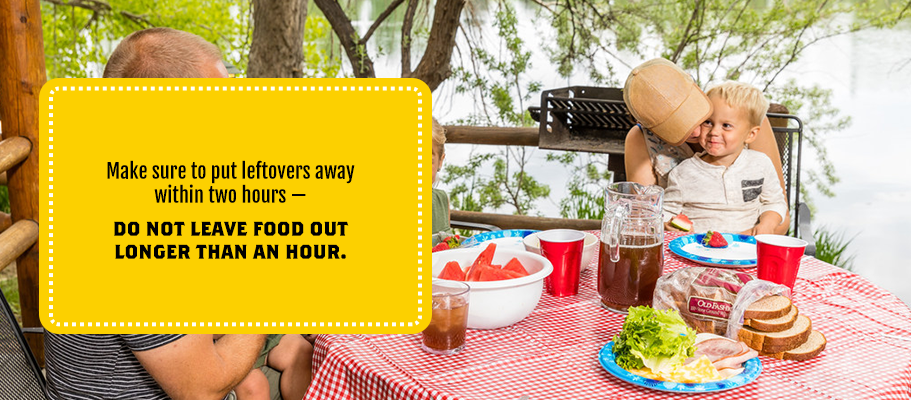
2. Know Food Safety
Keep your camping trip free of illness and pay careful attention to how you store your food. Keep raw meat packed in ice right up until the moment you are ready to grill, because bacteria proliferate when food is between 40 and 140 degrees. Make sure to put leftovers away within two hours — and, in hot weather, do not leave food out longer than an hour.
Store food in airtight bags or containers and keep them in coolers. Bring one cooler for drinks and another for perishable food items, and pack the coolers full. You can use frozen gel packs, ice cubes or frozen bottles of water in the cooler. Lastly, keep hands clean with disposable wipes or eco-friendly soap.
3. Do the Prep Work at Home
It is much easier to slice and dice peppers and onions in your kitchen than it is at the campsite. Keep things simple and prepare as many ingredients as you can at home. For example, if you are excited to make campfire scrambled eggs, crack and scramble the eggs at home and store them in bottles for the trip.
When you are ready to cook, make sure all your utensils are clean and within reach. You do not want to leave your food unattended while you search for your spatula or spoon. When you plan your meals and come prepared, campfire cooking will be a stress-free experience.
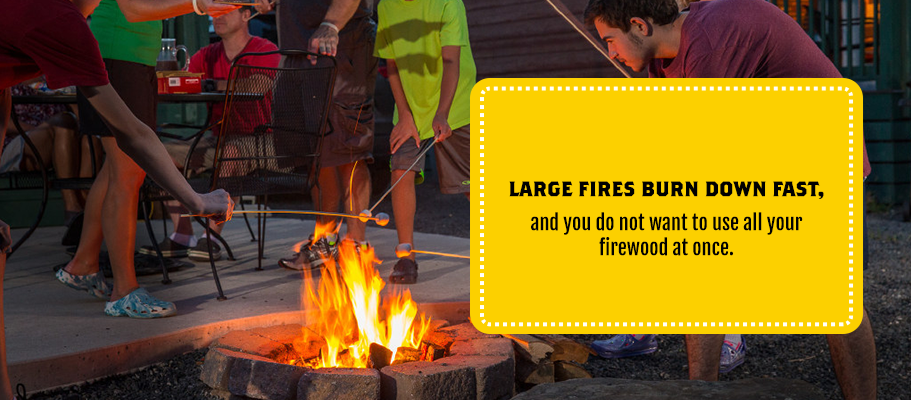
4. Bigger Is Not Always Better
You might be tempted to create a fire with huge, roaring flames, but this will not do much for your baked bean recipe. Large fires burn down fast, and you do not want to use all your firewood at once. Spend your wood wisely, and you will have plenty left over for a post-dinner snack and campfire stories.
5. Start Early
Get your fire going at least an hour before cooking to allow plenty of time for flames to die down and coals to get hot. Also, keep in mind cooking on a campfire takes longer than it does in your kitchen at home. You will need to turn food every so often for even cooking, and use a thermometer to make sure you have cooked everything to safe levels.
6. Bring Aluminum Foil
Aluminum foil is a must-have for any camping trip. Aluminum foil hardly takes up any room, is inexpensive and you can toss vegetables or fish in foil packets and place them on hot coals for cooking. Best of all, aluminum foil is easy to clean up.
Other Options for Cooking While Camping
If campfire cooking is not for you, do not let it bring your spirit down. You can still enjoy a smokey meal or gooey sweet treat without the need for firewood. Here are some other campsite cooking options you can enjoy comfortably while still dining like a pioneer under the stars.
1. Portable Propane Grill
A portable propane grill is an excellent alternative to building a fire. A portable propane grill is compact, easy to transport and simple to use. All you need to do is push the ignition button — no matches or lighters required. You also get to use adjustable burners to control the heat.
2. Portable Propane Stove
A portable propane stove might be the go-to choice if you want to break out your Dutch oven or cast-iron skillet. Just like a propane grill, all you need to do is press a button to get it started. Some portable propane stoves even fold up for super-easy transporting.
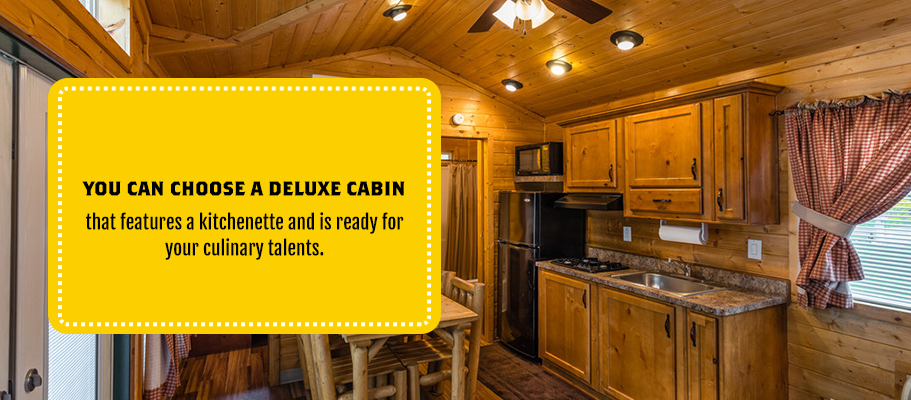
3. Cabin With a Kitchen
Lastly, you could choose a Deluxe Cabin that features a kitchenette and is ready for your culinary talents. This option might be the best solution for campers who want to ensure proper food safety. Many Deluxe Cabins offer the comfort and convenience of your home kitchen. When you finish up in the kitchen, the great outdoors will still be waiting for you.
You might also use a kitchen for cooking meals and a fire pit for roasting marshmallows or other snacks. That way, you can leave the Dutch oven at home, but still get a taste of campfire cooking. When it comes to camping, the choice is always yours.
Be sure to check specific KOA campgrounds to see if this option is available, as not all campgrounds offer Deluxe Cabins with this feature.
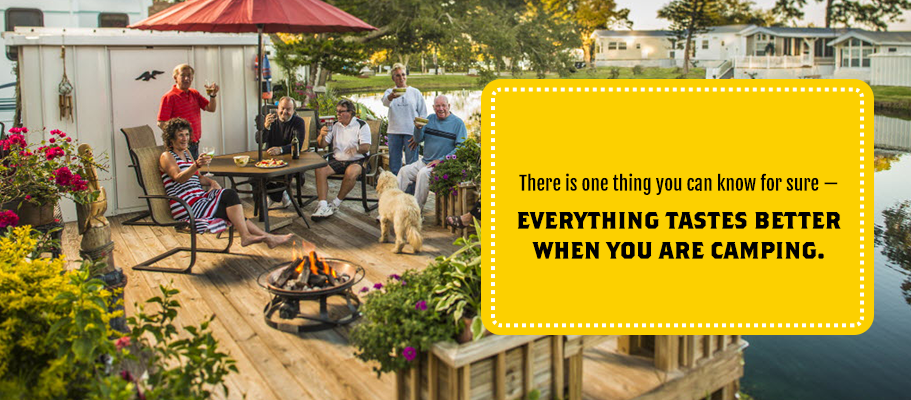
KOA Has Options for Every Camping Chef
Whether you are an experienced chef or just starting out, there is one thing you can know for sure — everything tastes better when you are camping.
KOA recognizes each chef has a unique cooking style. For those who love cooking over the campfire, a KOA Campground makes it simple. Set up your grill grate over the fire pit, and you will be ready to go. Want to cook on your propane grill? A KOA patio is a perfect spot for grilling your specialties.
If you want a little less rustic cooking option, we can help with that too! Make your reservation today!
